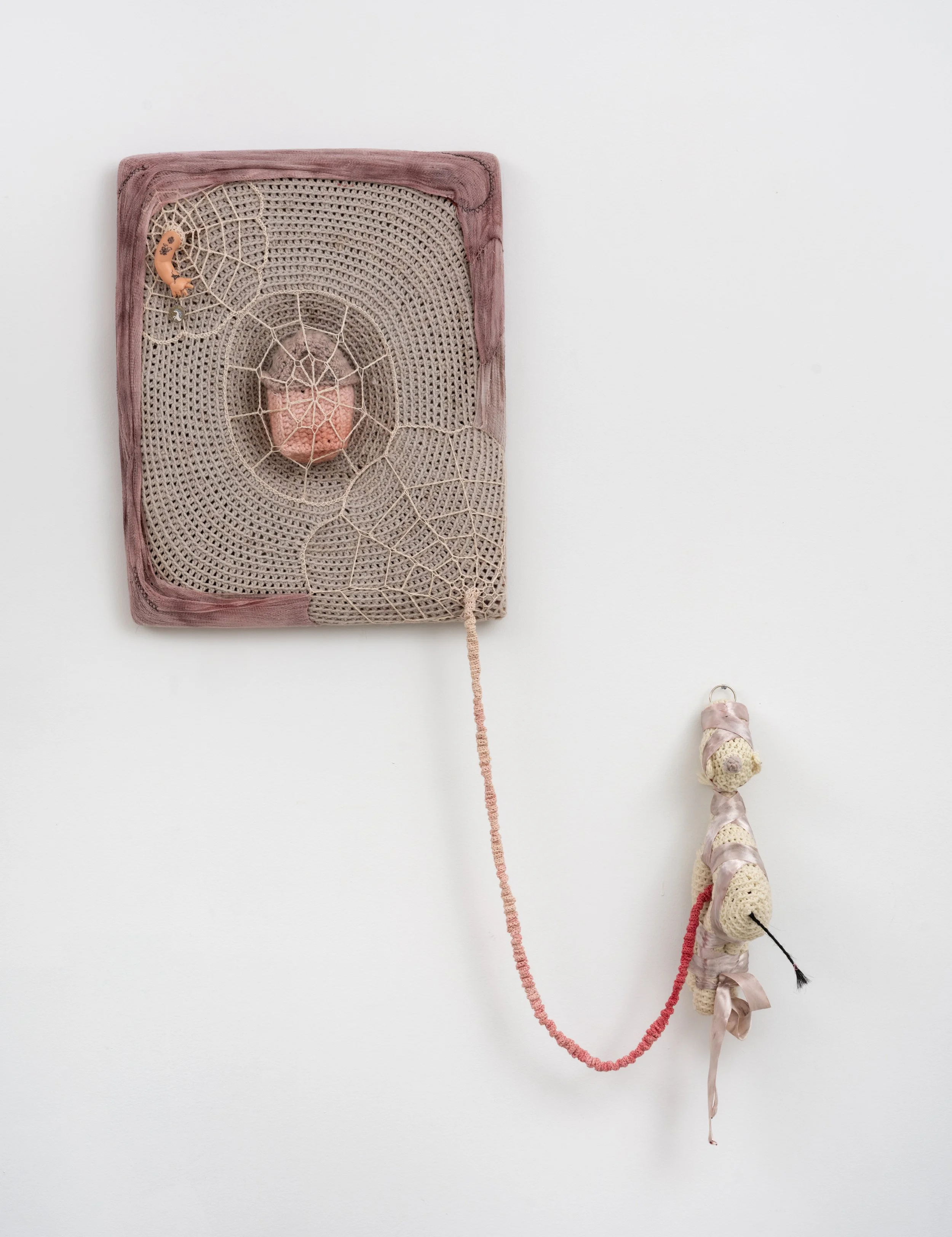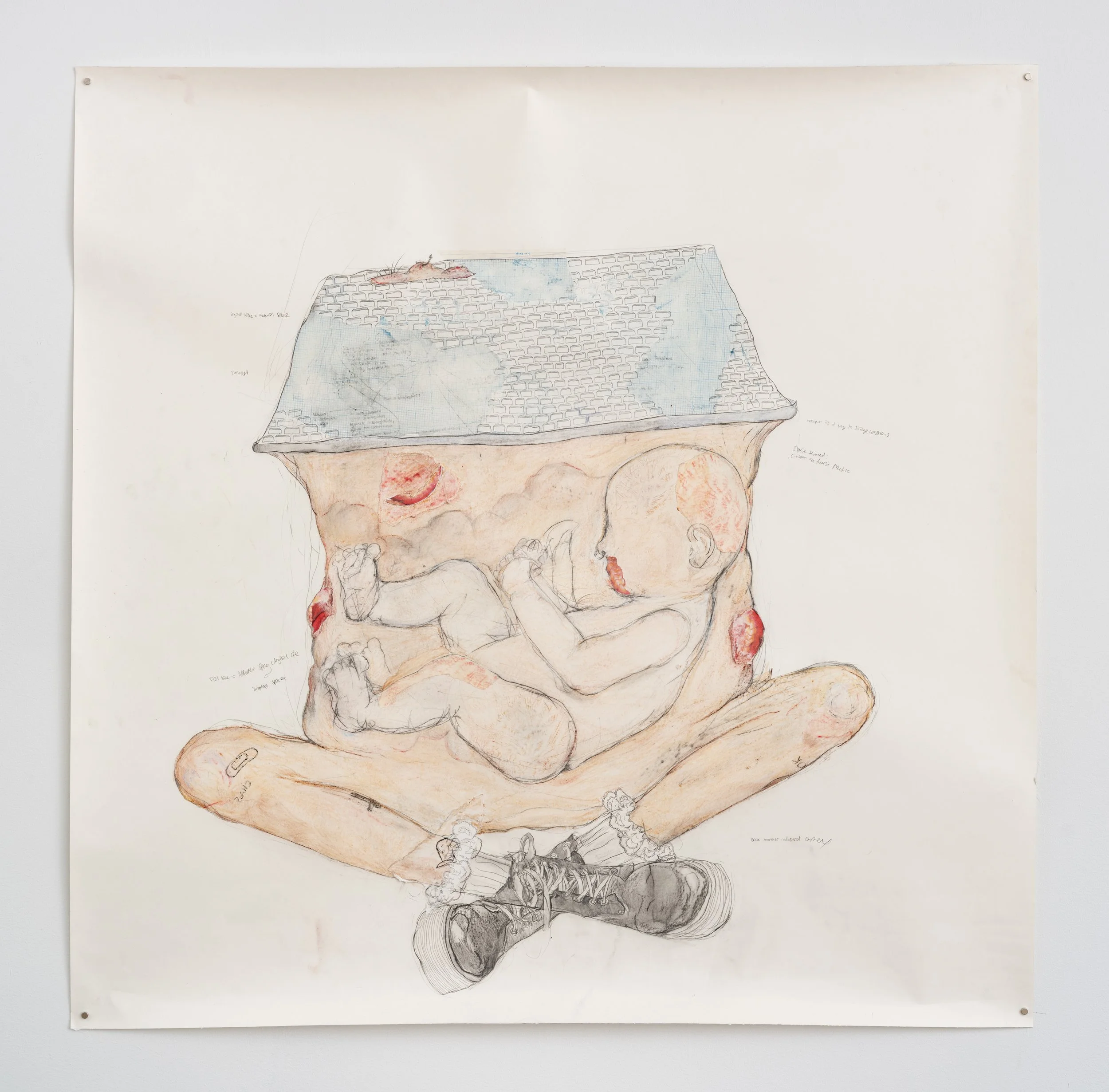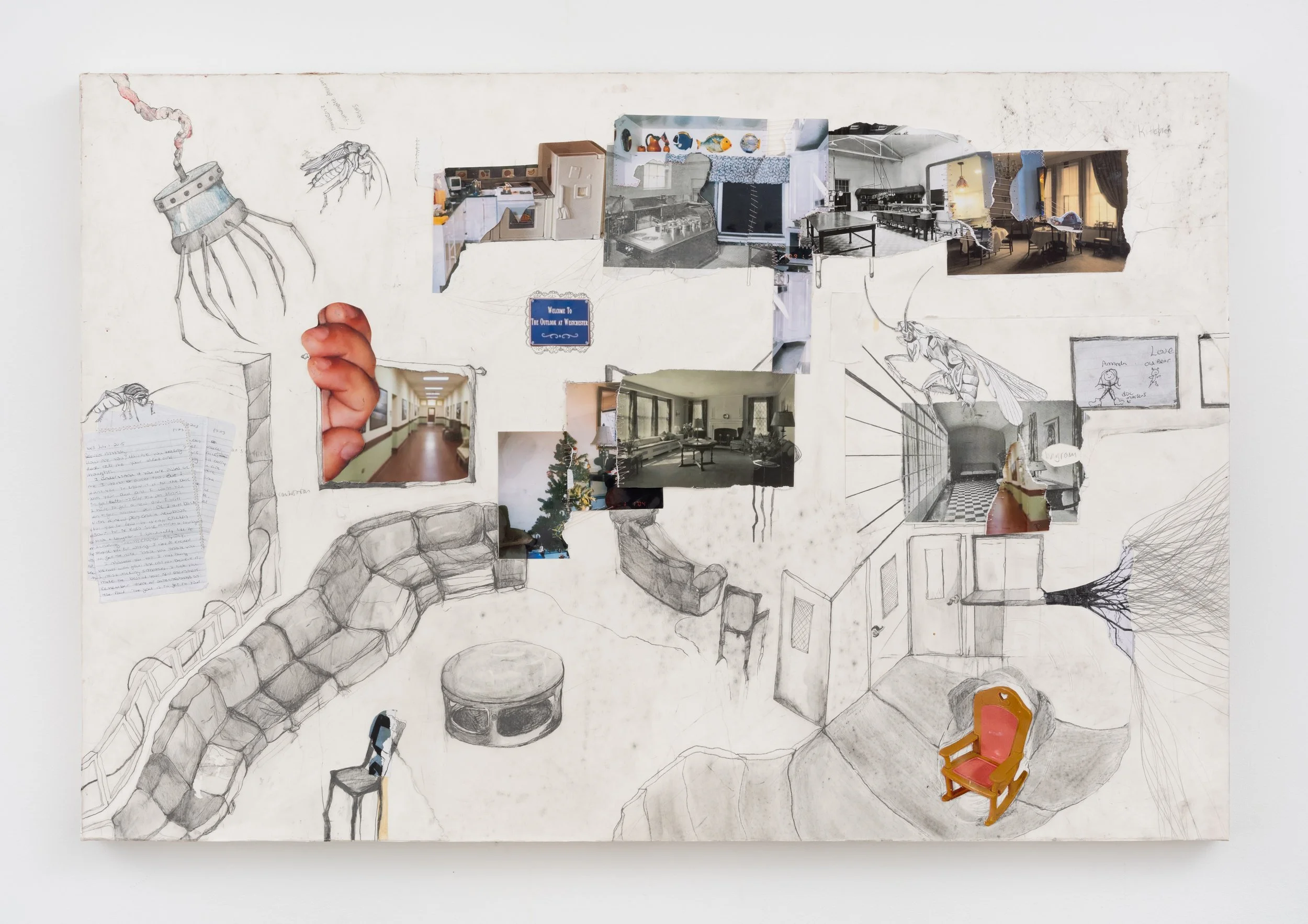The Engrossing Psychology of Ophelia Arc
I often approach psychoanalysis tepidly due to the century-plus of discursive baggage that I struggle to get past. However, when artists effectively create psychologically charged work, their deeply introspective thoughts and experiences materialized in form are savored. Ophelia Arc’s exhibition, The Natal Lacuna—inspired by a feminine psychoanalytic interpretation of her past derived from the feminist philosopher Luce Irigaray—captures this enchantment in a way that only great artists can. Arc’s visceral artwork reveals the catharsis and discomfort that arise from self-probing as fertile ground for aesthetic production, but it is never mawkish. Through an inward look, Arc takes up Irigaray’s call to use feminine expression as a rejection of the psychological fallacy of the generic and universal masculine subject.
An array of almost grotesque, bodily, girly-punk objects, generally divided into multimedia drawings and crochet-based three-dimensional works, manifests such gendered topics and the artist’s past health struggles. reaD into a loWly Key, (i hope you are doing well) (2025), contains a crochet mesh over a stretcher frame, bordered by bruised-purple gauze. There is a small cavity in the center with a pink crocheted house trapped by thin threads in a spiderweb pattern. Two more loose spider webs cover the top left and bottom right corners—one with a protruding baby doll arm that has a sleeve of the artist’s tattoos, and the other featuring a crocheted umbilical cord connected to a crocheted unicorn in bondage by a pink ribbon.
A drove of the feminine psychological and visual motifs are introduced: maternity, birth, the home as a physical and psychic structure, and the traumatic transition between childhood and adulthood (via the tattooed baby’s arm). While the literal description may seem cacophonous, Arc maintains visual pleasure and harmony despite violent juxtapositions, such as the dismembered limb, the home ensnared in a perilous web, and the trapped unicorn. Part of the contrast between coherence and disturbance is Arc’s precise use of a bodily color palette throughout the show. The organic pinks, whites, and purples utilized to hand-dye her yarn and other textiles evoke everything within us—skin, blood, guts, organs—while remaining visually balanced.
Hanging from an IV pole, starvation motive (2024) features a crochet flesh-tinged stomach-like sack with bulbous growths and has a long, thick crocheted rope wrapping through and around, resembling intestines. This stitched organ is suspended at the top of the pole by wispy threads that are tethered back to the ground by a specimen cup filled with quarters. The sticker is labeled “6/30/15,” the artist’s birthname, Amanda, and a doctor’s name, but the “type of specimen” line is left blank. Viewed in concert with the IV pole, suspended stomach, and emaciating title, the sculpture conveys the unsettling fragility of health—a vital organ tenuously supported by the weighted cup, string, and sterile medical stand.
One of three drawings from a 2024 series, self embodiment II renders a mangled humanoid figure sitting in a juvenile crisscross-apple-sauce position with bare, tattooed, fleshy legs in Doc Martens and frilly socks. Above the waist of the exposed legs is a baby suspended in a block of flesh under a blue Fisher-Price toy house roof. The humanoid-house evokes a kind of body horror, but rather than feeling threatening, it is contemplative: an image of the artist reconciling her past self with the present. These human-houses in each drawing express the difficult nature of being, but are not tortured. There are also various surrounding inscriptions by the artist in pencil: “trauma ruptures the psyche,” “the too much of maternal need,” and “The womb, the return to childhood.” These scribbled notes serve as personal reminders for Arc to delve deeper into her psyche through expressive figures, to gain a better understanding of herself.
Part collage, part drawing, anniversary effect (congratulations on 10 years of mapping airless space) (2025) is Arc’s most explicitly biographic work, where she creates a kind of memory map of an inpatient psychiatric center where she was admitted a decade ago. The cutouts of the health center, sourced from archival materials, are stitched into the panel and conjoined with other found photos of Arc’s childhood home, as well as drawings of couches, doors, and halls that connect the space, accompanied by written labels for each room. On the left edge of the work, there is a reproduction of a letter Arc’s mother wrote to her, filled with tender wishes but also regret over an unknown issue. Here, the similarity between the artist’s handwriting, as seen throughout the show, and her mother’s is striking. Arc brings psychology back to the feminine, to an ambivalent relationship with her mother, and to the trauma of past illness that can never be fully resolved but expressively fills Irigaray’s natal lacuna, unquestionably decentering the masculine subject.
Ophelia Arc: The Natal Lacuna is on view at Lyles & King from June 26 through August 1, 2025.
You Might Also Like:





